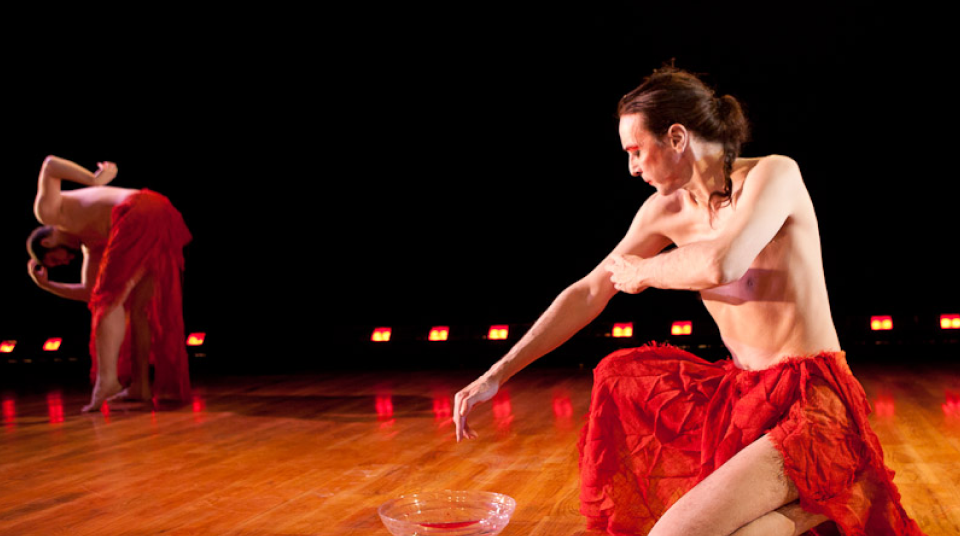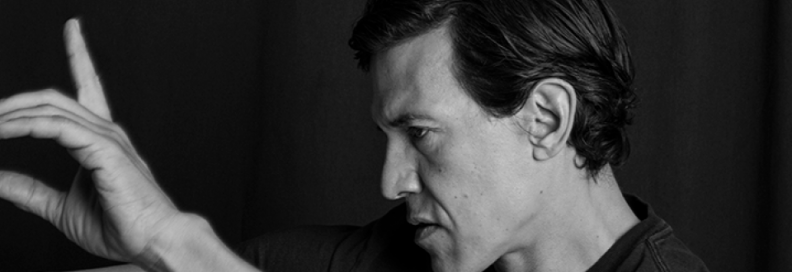Professional workshop
Paul Ibey – Butoh
18 ⇾ May 22 2026 (Monday – Friday)
09:30 to 12:30
Weekly rate:$95
Drop-in:$28
Every day
Teaching Language: English
Questions can be asked in:
French, English
Registration will open on Sunday, February 1, 2026.
Categories
#Creative process #Somatic #Technique
#Creative process #Somatic #Technique

© Tristan Sheriff
Objective
Butoh is one of the major developments of contemporary dance. It has revolutionized the way people view what dance is or can be. Founded by Hijikata Tatsumi in Japan in the 1960s, it has created new forms of dance movement and expression. Its powerful images and new approach to dance have stirred the interest and imagination of a growing world audience. Butoh takes its strength from interior movement: the body twists, contracts, and extends. Softness, violence, slowness, sensuality, and immobility are all part of butoh.
Content
Butoh has also been used as a tool for movement therapy as it enables people to live their own naturally arising emotions as well as suppressed emotions. Each day begins with physical exercises before leading into guided improvisations. Some improvisations will involve group work. All instructions are verbal with demonstration. The session ends with a group cool down. Physical limitations are not a barrier in this workshop. Music is used throughout. Participants are encouraged to find their own way of moving within the structure, although there are certain guidelines. The workshop can increase in more complicated work depending on the ability of the participants.
Workshop Rhythm
~ Variable
Accessibility Features
~ Floor work
~ High music or sound level
~ Intense emotional work
~ Standing up for a long time
Biography
Paul Ibey’s prime focus has been butoh for over three decades. He had originally studied with butoh founders Kazuo and Yoshito Ohno and Akiko Motofuji, as well as Natsu Nakajima, Carlotta Ikeda, Manhong Kang, Sankai Juku and Dai Rakuda Kan, among others. He is one of the only Westerners to be respected and approved of by the masters of the genre, and given his butoh lineage, Ibey is now considered to be a butoh master himself.
Prior to his becoming a butoh artist, Paul studied and performed with the Royal Ballet in London. He furthered his ballet training with Lynn Seymour, Gelsey Kirkland, Roger Tulley, Tatiana Tchernova, Lazaro Surmeyan and Stanley Williams.
Paul trained in contemporary dance with Lucy Burge, Sally Owen, Ruth Silk, Nelson Fernandez, Christopher Bruce, and Robert Cohan; mime and movement with Adam Darius, and worked for several years with the renowned Lindsay Kemp Company.
Ibey’s work has been shown in London, Paris, New York, Bangkok, Quito, and throughout Europe and the Middle East. He has taught classes at the Martha Graham School, Northern Ballet Theatre and in Poland, Egypt, Palestine, Albania, Croatia, Mexico, Hungary and the Czech Republic. More recently, Ibey performed with Sankai Juku dancers in Japan.
Prior to his becoming a butoh artist, Paul studied and performed with the Royal Ballet in London. He furthered his ballet training with Lynn Seymour, Gelsey Kirkland, Roger Tulley, Tatiana Tchernova, Lazaro Surmeyan and Stanley Williams.
Paul trained in contemporary dance with Lucy Burge, Sally Owen, Ruth Silk, Nelson Fernandez, Christopher Bruce, and Robert Cohan; mime and movement with Adam Darius, and worked for several years with the renowned Lindsay Kemp Company.
Ibey’s work has been shown in London, Paris, New York, Bangkok, Quito, and throughout Europe and the Middle East. He has taught classes at the Martha Graham School, Northern Ballet Theatre and in Poland, Egypt, Palestine, Albania, Croatia, Mexico, Hungary and the Czech Republic. More recently, Ibey performed with Sankai Juku dancers in Japan.
“The inner visual improvisation helps me open my inner senses. This time, I see clearer images and feel more grounded. Visualization and groundedness help me open new ground in my work.” Charo
Partners
This workshop is supported by the Conseil de la formation continue arts et culture de Montréal (CFC) in collaboration with Studio 303. The CFC’s continuing education activities are supported by the Intervention-Compétences program, thanks to the financial participation of the Quebec government.




